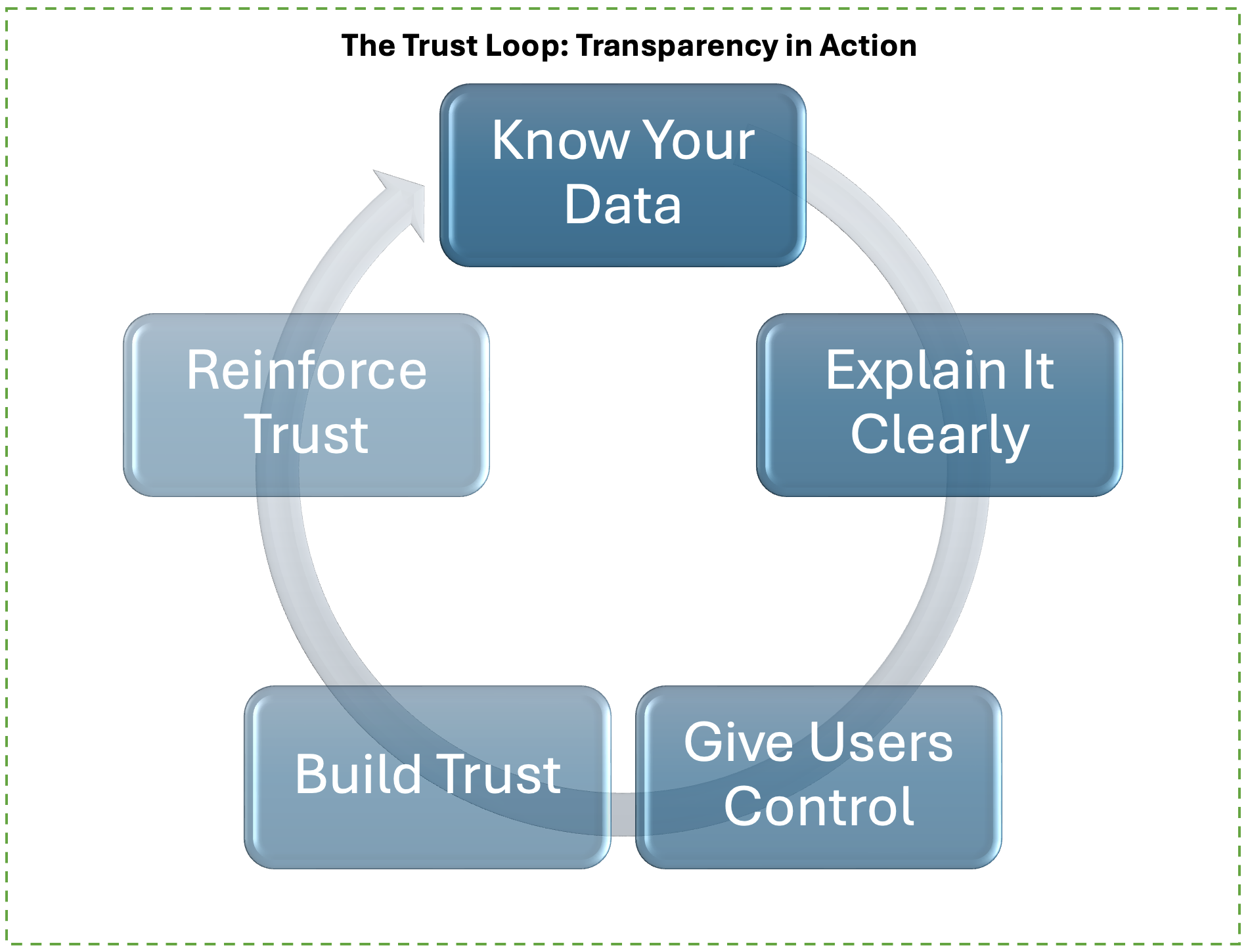Transparency Is the New Competitive Advantage in Data
📘 What Sparked This Thought
One customer I spoke with said:
“I don’t mind if companies use my data — I just want to know how and why.”
Transparency isn’t a burden. It’s an opportunity to build trust.
💡 My Understanding
Transparency transforms how people feel about your brand.
Hidden data practices breed suspicion. Open ones earn loyalty.
Transparency means:
- Clarity on what data is collected
- Clear explanations of how it’s used
- Visible mechanisms to opt out or correct data
Trust isn’t built by hiding less. It’s built by sharing more — with respect.
🔍 Real-World Example: The Dashboard of Trust
An e-commerce company created a personal data dashboard for customers:
- What data we have
- Why we collected it
- How it’s used
- Options to delete or modify
Results:
- Customer complaints dropped
- Retention increased
- Trust soared
🔄 Practical Moves Toward Transparency
✅ Build data maps — know your own flows
✅ Offer plain-language privacy policies
✅ Provide easy user access to their data rights
✅ Make transparency part of your brand story
✅ Key Takeaways
- Transparency builds loyalty faster than discounts
- Clear, honest communication reduces risk and confusion
- Empower users with control — they’ll reward you with trust
- Transparency isn’t a regulation to meet — it’s a differentiator to leverage

🤔 Questions I’m Still Thinking About
- How can we make transparency part of UX design?
- Should companies offer annual “data health reports” to users?
- How do we balance transparency with security concerns?
💬 Final Thoughts
The future belongs to brands who treat transparency as strategy, not compliance.
Make it easy for your customers to see and believe what you do with their data.